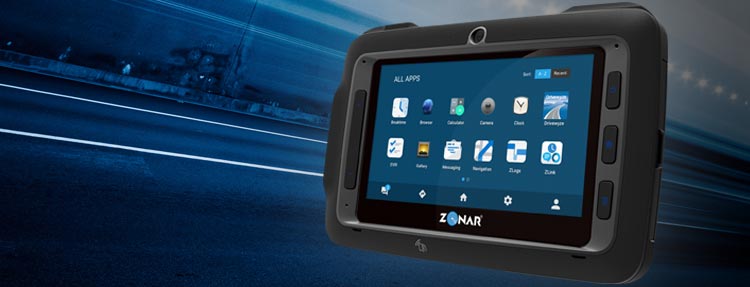“There’s an app for that,” is becoming a somewhat of a reality — especially in trucking where there you can find hundreds if not thousands of trucking-specific applications. But what is driving this trend?
Applications that are easy-to-use and add value or entertain, win. This is true across every industry, including trucking.
Mobile apps are ubiquitous and truck drivers are no strangers to using mobile technology. They use mobile electronic logging devices that store how many hours they spend behind the wheel and apps to locate nearby truck stops or to look-up a weigh station’s hours of operation. Because drivers are constantly mobile, many adopt and rely on these types of applications. Both the drivers and the trucking companies benefit from routing and efficiency enhancing applications.
When it comes to build vs. buy for trucking companies, there are a few things fleet managers should look at before deploying.
- Is the app supported? Once a fleet has deployed an app, it will be used in their business processes. If any support issues or challenges come up, a fleet manager needs a way to address them. He or she will need to ensure the app is supported by its telematics vendor, IT staff or a third-party developer.
- Is the data in the app secure and will it require the use of a back-end system? When mobile applications access enterprise data, documents and unstructured information are often stored on the device. If the device is lost or the device is used to access and share data, you need to be able to protect the information on the device and block access to enterprise data.
Mobile data encryption can be used to secure data within the application to help prevent outside access or loss of data. To control application data sharing on the device, individual data elements should be encrypted and controlled as well. - Is the mobile app safe? Does it distract the driver? Best-practice trucking apps lock down their interface when driving. A lock down does not necessarily occur on smart-phones.
- Is the app efficient and using data efficiently? You want your app to work quickly and do the job it’s designed to do. In today’s “I want it right now environment,” nobody wants to sit around and wait while they could be finishing their shift or getting back on the road. They want applications to do what is asked of them as quickly and efficiently as possible It is also paramount not to have a high data footprint. Data cost money, takes bandwidth on a network and time to transmit. Efficiencies hit a fleet’s bottom line and data is one more area that fleet managers need to take under consideration.
- What determines the cost? It is easy to go with the cheapest solution or to select a bunch of different apps that all have different functionality and hope they work for your needs. But if you are looking to add transportation solutions to optimize your fleet, you need to evaluate what value adds you are getting from your vendor and how the technology can help with service monitoring, maintenance, safety, and efficiency.
While there are a number of new players developing apps for the trucking market, telematics and fleet management vendors are coming at the marketplace from a number of different angles, from small app specific offerings to a full suite of solutions. The optimal model is likely having a purpose-built tablet that takes advantage of the open source benefits of the Android platform. The large volume of apps and recognizable user interface deliver innate user-trust and ease-of-use and adoption. By utilizing open source for development needs, you can customize your solutions for the specific needs of the transportation industry.
That said; an open device or app should still be in control of the fleet. Fleets should ensure that their apps and devices lock down the user interface when the vehicle is in motion. Without the lock down the devices would lend themselves to driver distraction and unsafe operating conditions. Additionally, the devices drivers are using for work should be purpose built. If you’re a fleet manager, do you want your device streaming a funny cat video or tracking hours-of-service and looking at vehicle maintenance needs? In addition to this being an obvious safety and time consumption concern, it is also a data usage concern. This in turn will lead to a consolidation of what and how many apps are used.
The transportation markets will follow the trends of the consumer market. Popular functioning apps will be used, and others will be lightly used. There will be a natural selection based on functionality and popularity. Additionally, as systems continue to upgrade the less popular apps won’t keep up with the upgrades and as a result, will fall off the apps stores. So while I still foresee growth in the number of apps we will also see apps die or succeed based on usability and the value they provide.
(This post was the source for an article in Heavy Duty Trucking.







